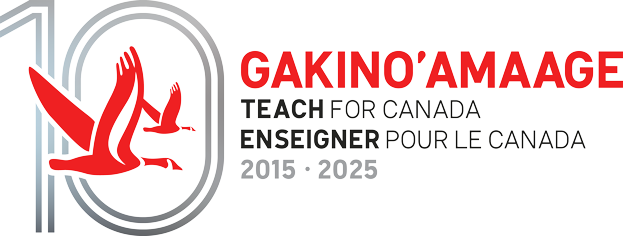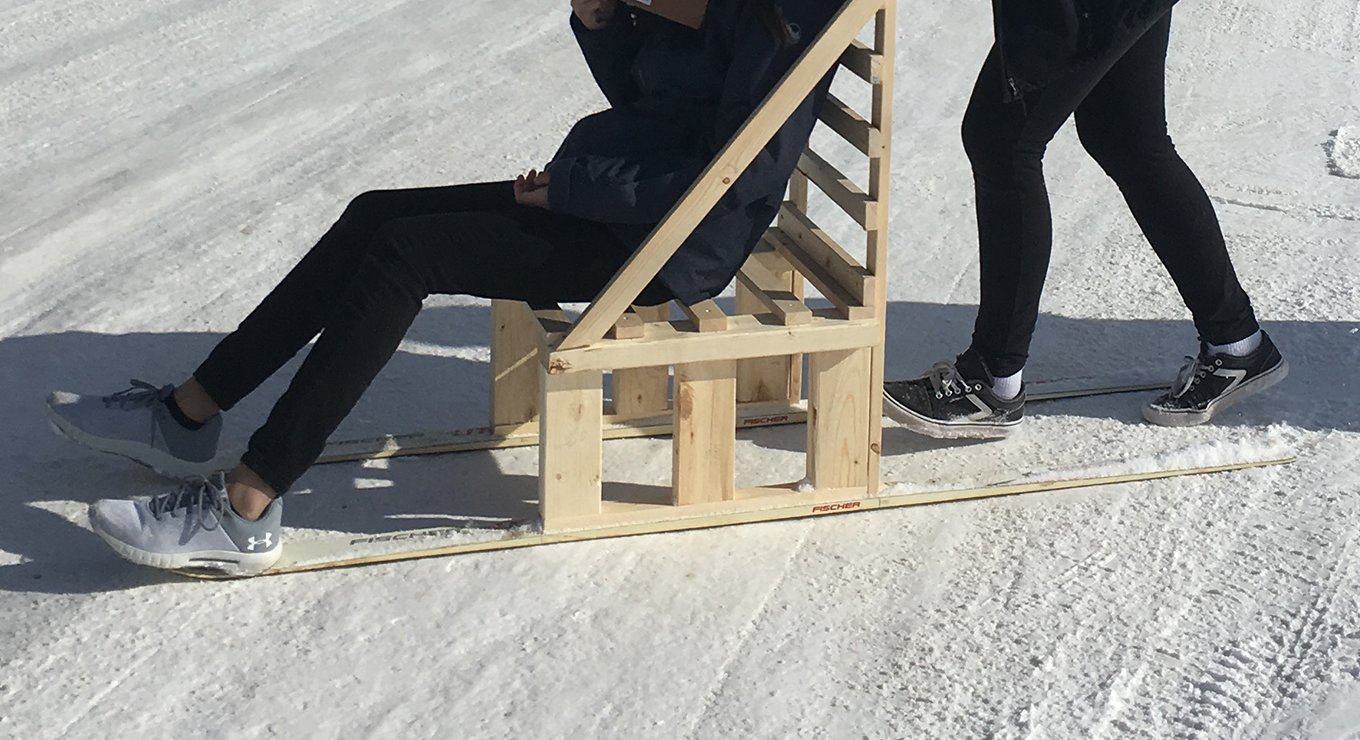Lora Kikuchi is a grade 7/8 teacher at Pegamigaabo School in Big Grassy River First Nation. She is currently in her second year as a Teach For Canada teacher. Before going North with Teach For Canada, Lora completed her Bachelor of Education at the Ontario Institute for Studies in Education (OISE), University of Toronto, and her Bachelor of Arts at York University. She has previously taught in New Zealand, Japan, and France. Lora is originally from Toronto.
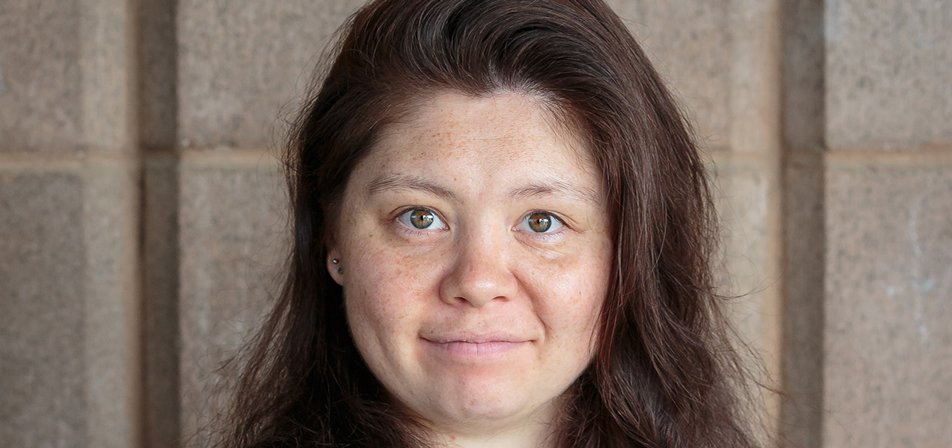
Lora Kikuchi is a grade 7/8 teacher at Pegamigaabo School in Big Grassy River First Nation.
Boozhoo. My name is Lora Kikuchi and I am the grade 7/8 teacher at Big Grassy River First Nation. This is my second year teaching grade 7/8 in the North and my first year in Big Grassy River First Nation. I am an Intermediate/Senior teacher with Health & Physical Education and French as a Second Language as my teachables. By now, you may have guessed that I probably feel totally out of my element to be teaching Language Arts, Science, Geography, History, Music, Art, Math, Native Language, etc.
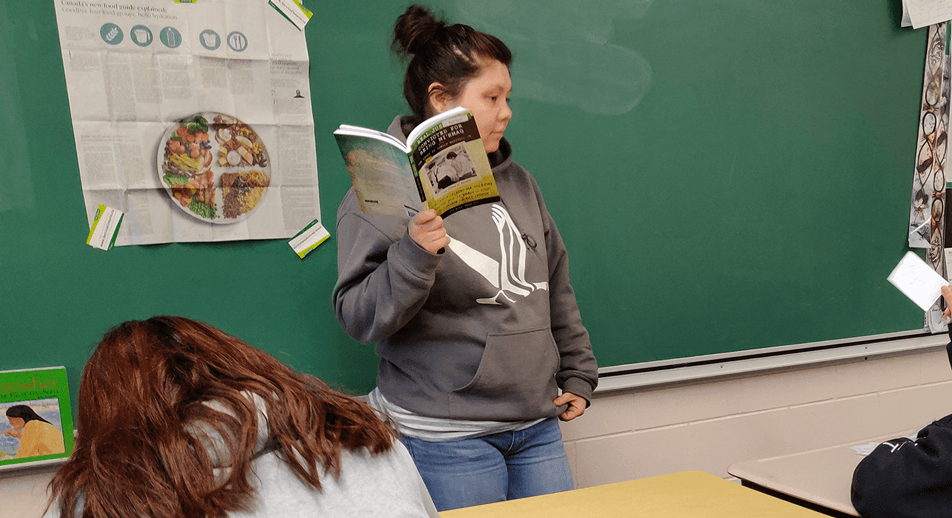
Teaching grade 7/8 has been challenging and rewarding for Lora.
I have interacted with and taught many young adults in my life, and I am learning slowly that grade 7/8 may be some of the toughest years to teach. I have been told, “It doesn’t matter who is in the classroom. The kids always seem to act up once they get to grade 7/8.” While this year has made question how much I can handle, I am definitely not known as a quitter.
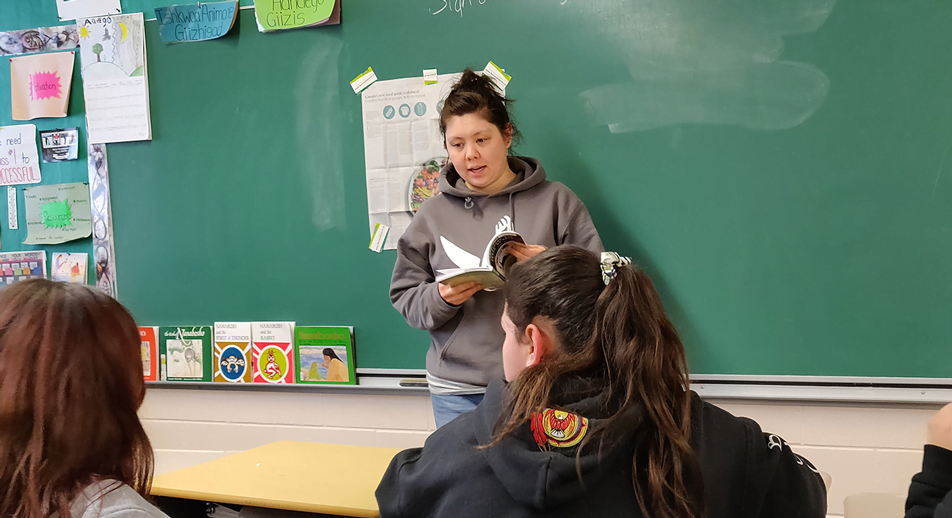
Feedback from Lora’s students helped her think of project-based learning.
Like many students their age, my students like to wander in and out of class, talk back, talk loudly, move their chairs to sit with their friends during lessons, and throw things across the classroom. Since September, I have been trying to think of ways to address this. My students often tell me they hate school and that they are bored. Regular classroom routines are clearly not working. My solution: no classes.
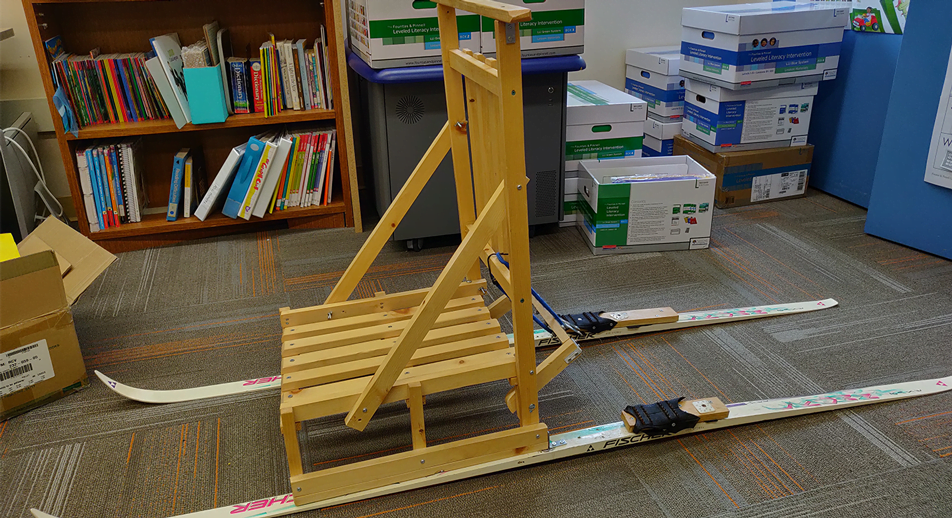
Lora saw her colleague Karen’s original prototype of a kicksled and thought it would make a great project for her students.
Before you make assumptions, ‘no classes’ did not mean that the kids did not go to school. Instead, we did a two-week long project of designing and making ribbon skirts with no formal lessons. Since then, we have made bannock, candles, and most recently…kicksleds!
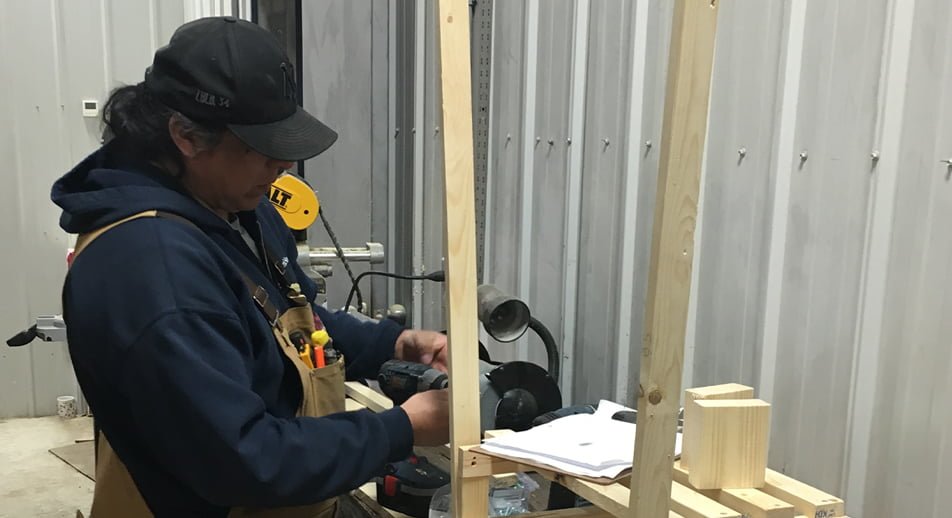
Tim Archie, head of construction in Big Grassy River First Nation, helped provide students with space and tools.
My colleague Karen, or Ms. C-G, is the SERT for Pegamigaabo School and she brought up her kicksled that she had designed and made. This kicksled is made on old cross-country skis. This got me thinking: maybe my students can make these for our science class on structures. I was told that there were a whole bunch of old skis lying around somewhere that hasn’t been used in years. So, I talked with my principal and Big Grassy’s head of construction, Tim Archie. We found the skis and purchased a bunch of wood.
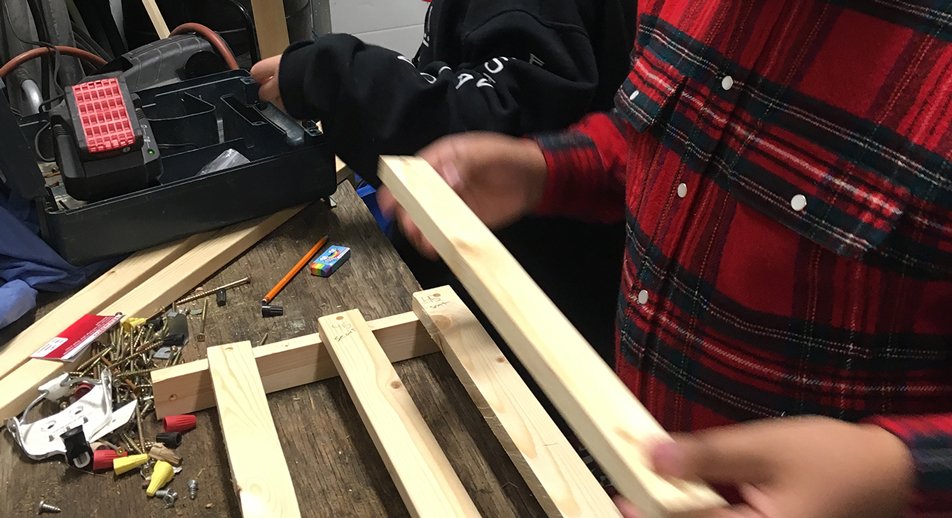
Lora purchased wood and found unused skis from around the community in order to build the kicksleds.
Having your principal on board is always helpful, but getting our head of construction on board was the best thing ever. Community initiative and involvement is key. We set up a schedule and the head of construction opened the fire hall for my class. He and his assistant gave us a tour of the space and the kids heard about job opportunities that they never knew about.
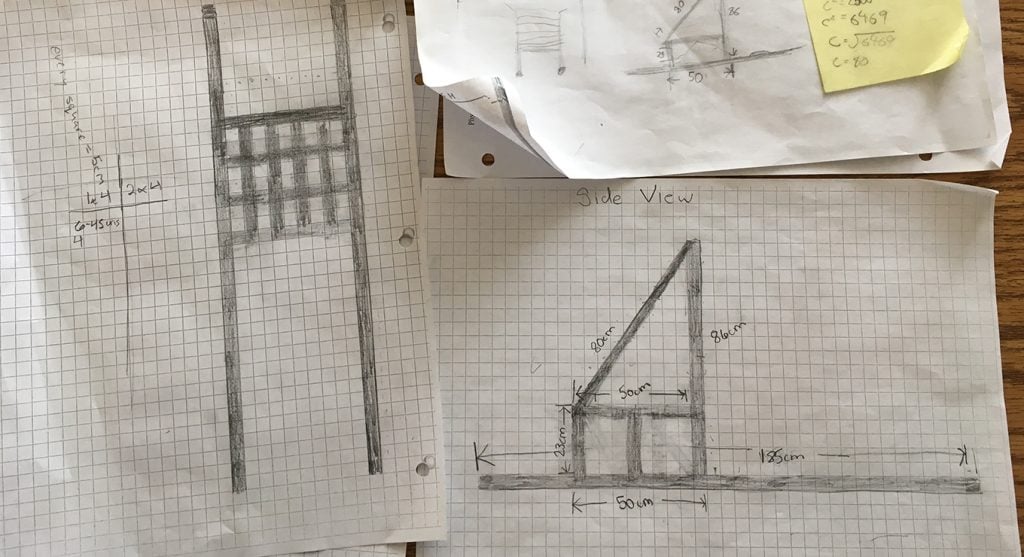
Students worked on technical drawings to design their kicksleds.
After the kids drew up their initial designs on scrap paper, I had them do technical drawings on graph paper using ratio (1 square = 5 cm). The designing part always seems to take the longest. I think this is because they have a hard time picturing what the end product will look like. It took several days of 1.5-hour science classes. Even then, many did not finish. Nevertheless, we started heading to the fire hall to start measuring pieces of wood (and finishing our designs).
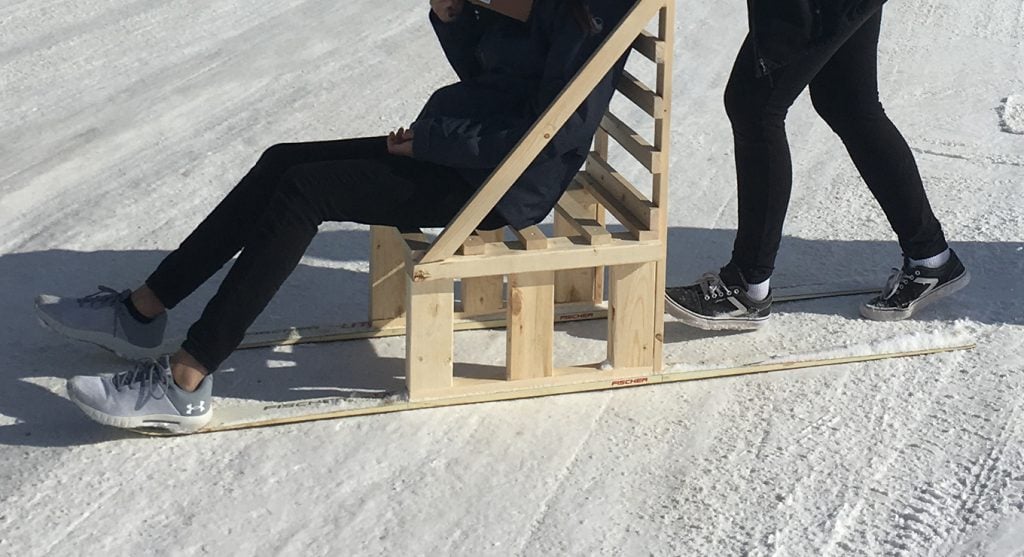
There were many distractions in the fire hall. There also may have been several games of tag and hide-and-go-seek going on while building. Several kids tried climbing the fire truck and the forklift. I am telling you all this because there wasn’t a miraculous change in the students doing project-based learning, but I think the kids gained a little confidence and pride in their abilities. Just before the break, I encouraged them to take the kicksleds out for recess and it looked like they were having fun.
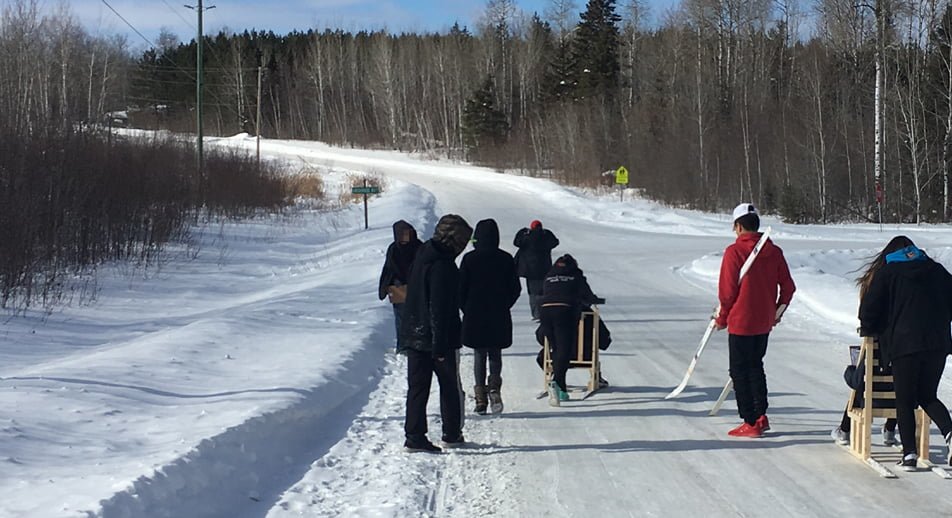
Students from Big Grassy River First Nation tested out the kicksleds they built.
I could not have done this project without the support of Ms. C-G, my EA, our principal, and our head of construction. We had other volunteers, like the infamous Elvis as well. I feel very fortunate to have such supportive people working in Big Grassy. I hope that the students see that there are many people here who care about their education and success.
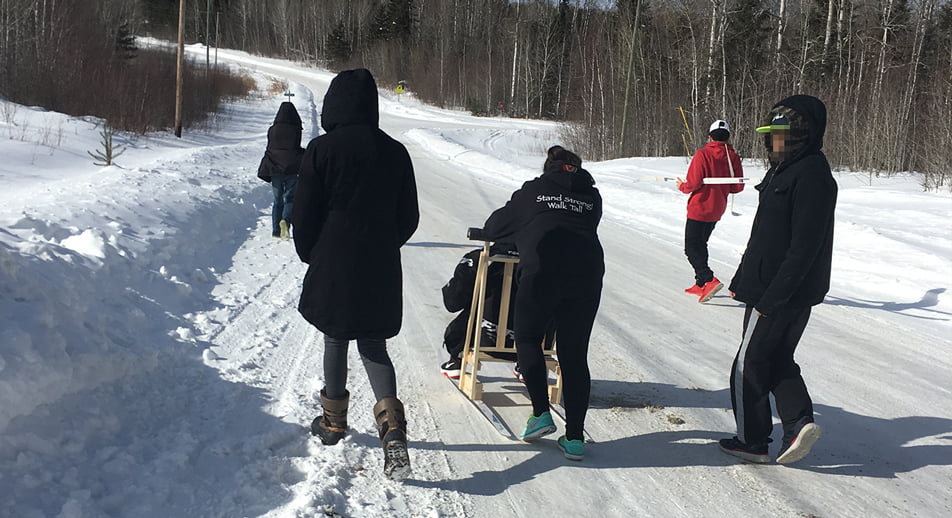
Students who participated in project-based learning gained confidence and pride in their abilities.
If I have one take-away message for you, it would be this:
Give kids opportunities to be proud of their abilities.
It’s cliché, I know, but somewhere down the road, I guarantee that my students will forget me and the curricular content that I tried so hard to teach, in hopes that they will be successful individuals. But I hope that they will look back at the items they created and made like their kicksleds, and find the courage to take risks and to be their own unique engineer for life.


